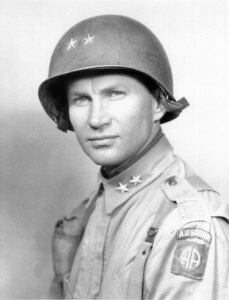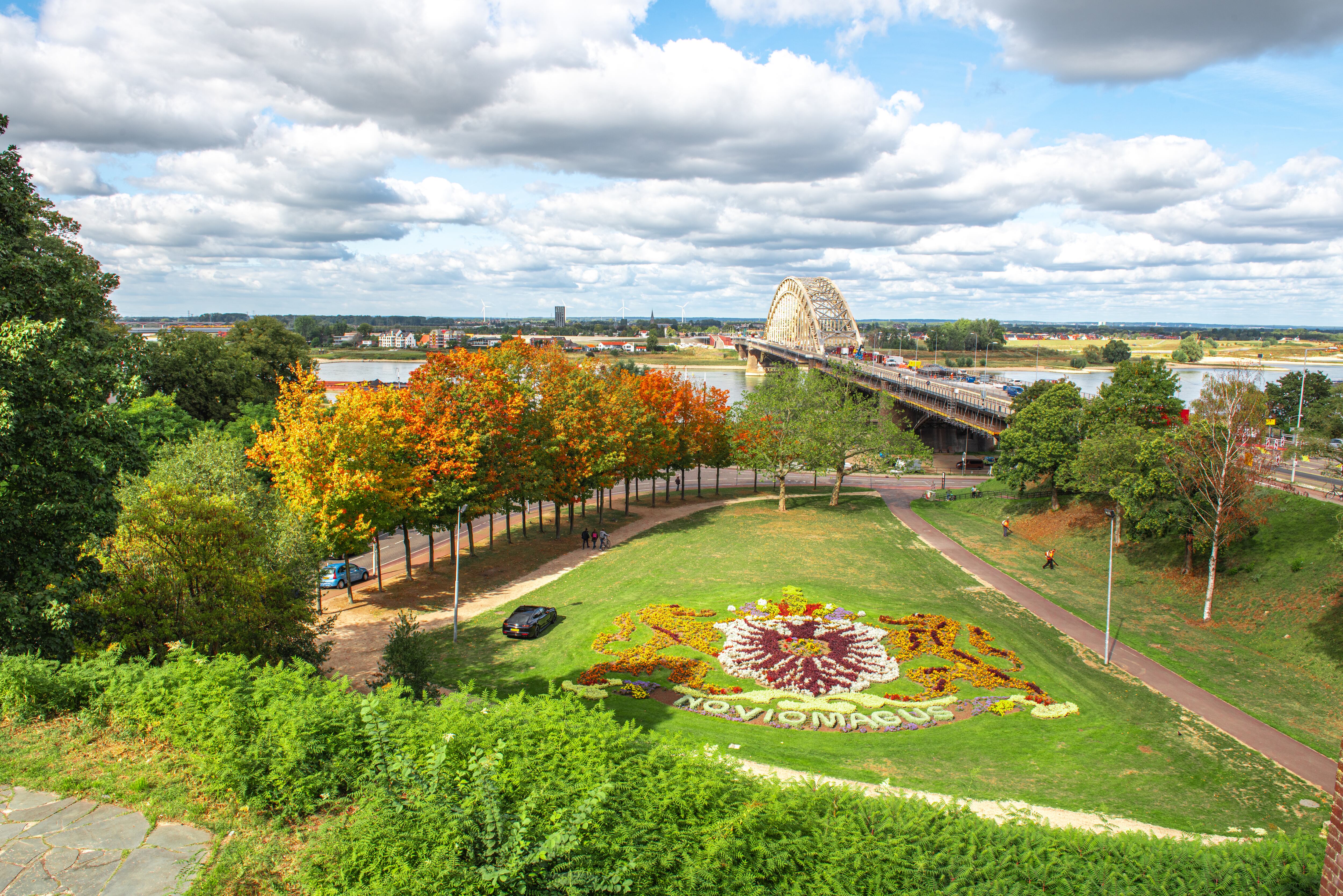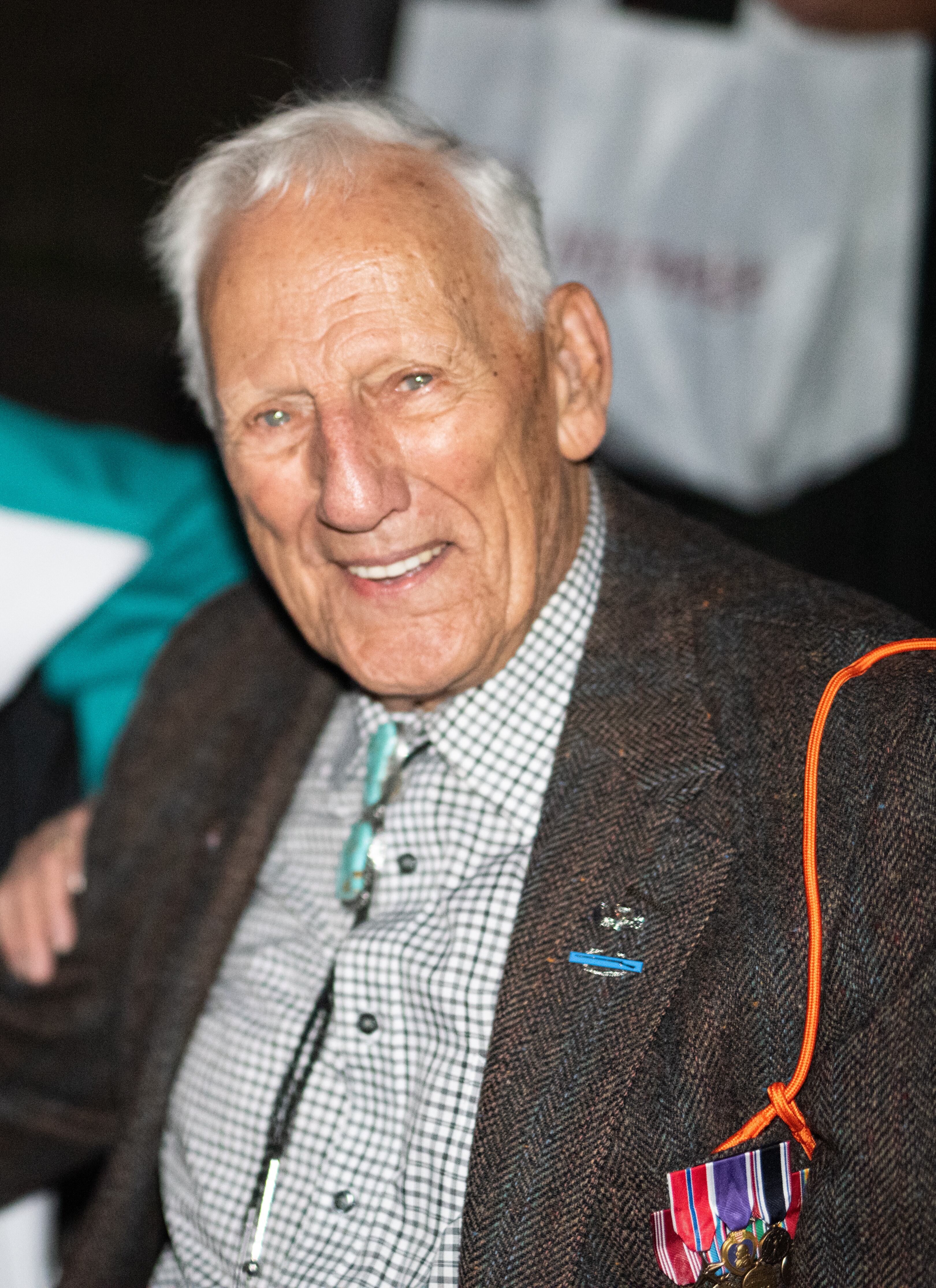NIJMEGEN, Netherlands — Col. John Frost and the men of the British 1st Airborne Division were isolated. Their hold at the Arnhem bridge was tenuous at best, a need for reinforcements becoming clearer by the hour as the toll of relentless German assaults mounted.
Fifteen miles to the south, men from the 82nd Airborne Division, led by Brig. Gen. James M. Gavin — alongside Maj. Gen. Allan Adair’s Guards Armoured Division — were mired in a savage fight to cross the city of Nijmegen.
By the time the Allies arrived, Nijmegen was burning.
Determined to yield nothing to their captors, the Germans had set fire to the Netherlands’ oldest city, orchestrating an apocalyptic scene that would be the setting of fierce hand-to-hand combat.
In order to get to Frost, the Allies had to wrest Nijmegen’s bridges from German control. Operation Market Garden’s success depended on the hasty capturing of bridges, but it had become clear after two failed frontal attacks on Sept. 17 and 19 that prying a bridge from the grip of an SS Panzer division would require a simultaneous assault from both sides.
It was essential, Gavin determined, for a detachment to move approximately 1 mile down the Waal River, cross in boats, and attack the other end of the bridge in a maneuver designed to surprise the enemy.

Maj. Julian Cook’s 3rd Battalion, 504th Parachute Infantry Regiment were tasked with the river crossing.
While Cook may have initially anticipated having the element of surprise on his side, he would soon learn that the 504th’s attack would more closely resemble somewhat of a suicide mission.
Time was of the essence, and mission success could not afford the luxury of waiting for the cover of nightfall.
Instead, Cook’s men were ordered to row across the river in broad daylight — in full view of heavy German defenses.
As Cook prepared his men, it was determined that Gavin’s most trusted battalion commander, Lt. Col. Benjamin Vandervoort, would attack the western ends of the Waal bridge with 2nd Battalion, 505th PIR.
The convoy delivering Cook’s assault boats, meanwhile, became bogged down when it encountered heavy enemy fire along what the GIs dubbed “Hell’s Highway.”
Sensing his men’s nerves resting on the edge of a knife, the major joked that “he was going to imitate George Washington in the well-known picture crossing the Delaware. He was going to stand erect in the boat and with a clenched right fist,” shouting, “Onward men, onward!”
Despite Cook’s efforts, tension was only exacerbated when the men saw their assault boats arrive.
They looked more like “pieces of plywood with canvas wrapped around them and a few extra boards piled on top,” Capt. Moffatt Burriss recalled.
These were not boats fit for traversing one of Europe’s largest rivers. The men of the 504th were sitting ducks wrapped in thin canvas.
‘THEIR GUNS SPITTING FIRE’
A swift current and withering German small-arms fire made the crossing excessively brutal.
The smokescreen that had been set by the Leicestershire Yeomanry and the Irish Guards began to wither as smoke rounds ran low and machine guns overheated. With only three paddles per boat, many men resorted to paddling furiously with the butts of their rifles.
Capt. Henry Keep, once a rower at Princeton, remarked that the boats were “all crammed with frantically paddling men. Set to the deafening roar of omnipresent firing, this scene of defenseless, frail canvas boats, all jammed to overflowing with humanity, all striving desperately to cross the Waal as quickly as possible and get to a place where at least they could fight — this was fiendish and dreadful. We looked like a bunch of animals, void of dignity and normalcy.”

Of the 26 boats delivered by the British, only 11 made it to the far shore.
One day earlier, on the outskirts of Nijmegen, Lt. Col. Patrick J. Cassidy and men from the 502nd Parachute Infantry Regiment found themselves pinned down.
Paddy McCrory, a tanker with the Irish Guards, came to the aid of Cassidy, unleashing an otherworldly barrage that killed 30 Germans and shifted the course of the entire fight.
“When in doubt, lash out,” the Irishman said following his assault.
The phrase, which Cassidy adopted as his motto, spread throughout the ranks of American paratroopers.
Whether it ever graced the ears of the men in those 11 boats is unknown. Nevertheless, they exemplified its meaning entirely.
“Many times I have seen troops who are driven to a fever pitch — troops who, for a brief interval of combat, are lifted out of themselves — fanatics rendered crazy by rage and the lust for killing — men who forget temporarily the meaning of fear," Keep described.
“However, I have never witnessed this human metamorphosis so acutely displayed as on this day. The men were beside themselves. They continued to cross that field in spite of all the Kraut could do, cursing savagely, their guns spitting fire.”
The frantic confusion of enemy fire and smoke dismantled any semblance of unit organization. As with Normandy some three months prior, officers linked up with men nearest to them, embarking in small groups.
Cook’s men who made it across were more than ready for a fight, driving the enemy from their embankments in under an hour and sending German engineers scrambling to set off explosives rigged to the bridge.
Except the explosions never came.
Americans had cut the detonation wires as they advanced, preserving a passage for British tanks and Vandervoort’s men to cross from the other side.
Over 40 of Cook’s men had been killed. Another 151 were wounded.
But they held the bridge.
So welcome was the sight of Allied reinforcements that many paratroopers mobbed the tanks in excitement, even kissing the hulking vehicles.
‘GODDAMN TEA’
That indescribable relief soured quickly when, instead of advancing through the newly cleared route, British Capt. Lord Carrington ordered his men to set up a defensive perimeter and await infantry support.
Then, like something out of a bad sketch, the Brits stopped to brew tea.
Cook’s soldiers were incensed, accusing Carrington’s men of cowardly abandoning the trapped 1st Airborne Division to fend for themselves in Arnhem.
Of Cook’s paratroopers, historian Antony Beevor writes, “they naturally believed that the only reason for their semi-suicidal crossing of the Waal in full daylight was because every hour counted if XXX Corps was to save the 1st Airborne at Arnhem. Otherwise, the attack could have waited until after dark.”
Seventy-five years later, that anger still resonated.
“The British were supposed to close the gap, but they stopped for goddamn tea,” 82nd Airborne veteran Gene Metcalfe told HistoryNet at the 75th anniversary commemoration in 2019.
Metcalfe, whose C-47 aircraft was shot down seconds after he leapt from the plane, would narrowly escape death yet again that same day when a round from a German 88 millimeter, or “ack-ack," anti-tank gun exploded nearby, knocking him unconscious.
After rolling Metcalfe over and discovering he was still breathing, soldiers from the 10th SS Panzer Division took him as a prisoner to Nijmegen’s Belvédère castle.
He would spend the next eight months bouncing between some of the war’s worst prisoner camps, a span that included multiple escape attempts.

‘PURE LUCK’
At the 2019 ceremony in Nijmegen commemorating the 75th anniversary of the city’s liberation, Metcalfe, 97, joked that he did, in fact, accomplish the mission of making it across the bridge — he just had a Nazi escort.
Metcalfe recalled feeling lucky to have been captured by soldiers from the 10th SS instead of the 9th, a Nazi unit with a reputation for executing prisoners.
“The 9th had just arrived from Italy after annihilating an entire town,” he said. They killed everybody — women and children — everybody in that town.
“They were awfully mean.”
Whether the road to Arnhem was open following the Waal crossing remains a hotly contested topic.
The heroic, if not doomed, effort by Frost’s 1st Airborne Division was immortalized in Cornelius Ryan’s “A Bridge Too Far,” a story that was adapted for the screen in 1977, directed by Richard Attenborough and starring Sean Connery, Robert Redford, and Anthony Hopkins.
Today, the events of the crossing are commemorated each night in Nijmegen, with at least one veteran making the walk across the newly constructed De Oversteek bridge — Dutch for “the crossing.”
Forty-eight street lamps spanning the bridge illuminate in slow succession in honor of the 48 men who gave their lives to seize the bridge from Nazi control.
For those who lived through it, like Metcalfe, memories of that day remain as vivid as ever.
Contemplating the reasons why he made it back while others did not, however, is a little more difficult to explain.
“You do things to help yourself, like your training and knowledge and things,” he said. “But bad things happen, and I’d say it’s about 90 percent luck...
“Pure luck.”
Claire Barrett is the Strategic Operations Editor for Sightline Media and a World War II researcher with an unparalleled affinity for Sir Winston Churchill and Michigan football.
Jon Simkins is the executive editor for Military Times and Defense News, and a Marine Corps veteran of the Iraq War.




